

Why I Love Gen Ys And You Should Too. Articles by Robert Whipple, The Trust Ambassador - Tired of Poor Results? Try Less Control. Tired of Poor Results?
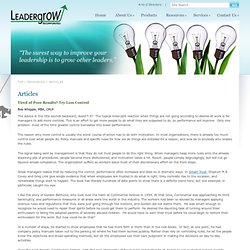
Try Less Control Bob Whipple, MBA, CPLP. 5 essentials for creating a productive culture. Every organization has a culture.

Whether it's positive and productive or toxic and chaotic is up to you. By Leading For Results | Posted: May 7, 2013 Every organization has a culture. Whether it’s positive and productive or toxic and chaotic is up to you. If you’re committed to creating and sustaining an atmosphere where employees can do their best work, concentrate on these important elements: Six Components of a Great Corporate Culture - John Coleman. By John Coleman | 3:00 PM May 6, 2013 The benefits of a strong corporate culture are both intuitive and supported by social science.
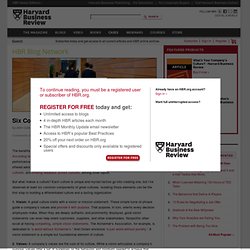
According to James L. Heskett, culture “can account for 20-30% of the differential in corporate performance when compared with ‘culturally unremarkable’ competitors.” And HBR writers have offered advice on navigating different geographic cultures, selecting jobs based on culture, changing cultures, and offering feedback across cultures, among other topics.
But what makes a culture? 1. 2. 3. 4. 5. 6. There are other factors that influence culture. Forget Balance! Gen Y Wants Work-Life Integration & Team Communication. May 2 378 Flares Twitter 126 Facebook 197 Google+ 12 Pin It Share 1 1 StumbleUpon 2 LinkedIn 40 inShare40 378 Flares × As Baby Boomers make their exit from the workforce, offices around the world are finding themselves challenged by the next generation of employees: Gen Y (AKA Millennials).
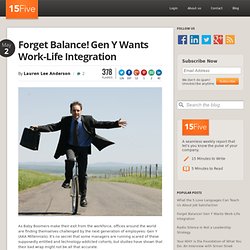
It’s no secret that some managers are running scared of these supposedly entitled and technology-addicted cohorts, but studies have shown that their bad wrap might not be all that accurate. Stereotypes aside, there is no question that this often-misunderstood group of employees are challenging conventional thinking about what a modern career looks like. The real question is — are you ready for them?
They Won’t Be Slaves to the Clock, Or Chained to a Desk “When Millennials say they want ‘balance’, they don’t mean work less. Gen Y’s penchant for technology has earned them the name ‘digital natives’. They are a Generation of Passion-Seekers But a truly purposeful job can’t be conjured up out of thin air. No personal comments about us, Statistics Canada warns employees. Why Employee Engagement Is Not Important (Yes, Really) Employee engagement is all the rage these days.
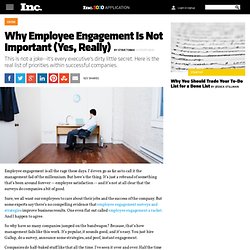
I’d even go as far as to call it the management fad of the millennium. But here’s the thing. It’s just a rebrand of something that’s been around forever -- employee satisfaction -- and it’s not at all clear that the surveys do companies a bit of good. Sure, we all want our employees to care about their jobs and the success of the company. But some experts say there’s no compelling evidence that employee engagement surveys and strategies improve business results. So why have so many companies jumped on the bandwagon? Companies do half-baked stuff like that all the time. And get this. A couple of weeks ago I did a mock interview with an executive I’m coaching. Regardless of the type of company or organization, here’s the answer and why: 1.
The purpose of any company or business is to win and keep customers. 2. Your boss is more important to the success of the company than you and your peers. Is Gamification HR’s New Best Friend? This article was written by Peter Grant, CEO of CloudApps.
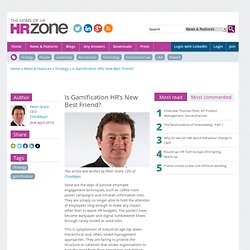
Gone are the days of passive employee engagement techniques, such as coffee room poster campaigns and intranet information sites. They are simply no longer able to hold the attention of employees long enough to make any impact other than to waste HR budgets. The posters have become wallpaper and digital tumbleweed blows through rarely visited or used sites.
This is symptomatic of industrial-age top-down, hierarchical and, often, siloed management approaches. 2013: The Year Of Social HR.